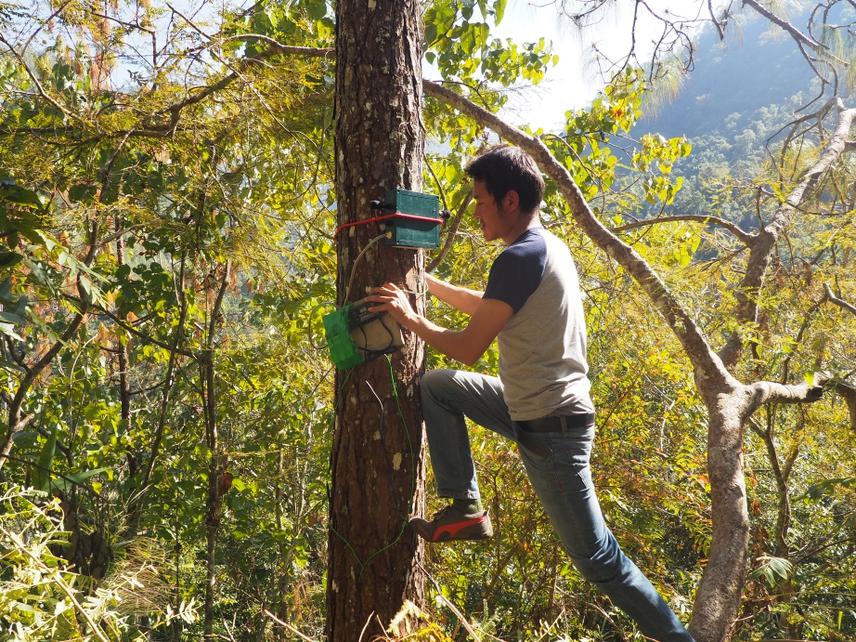Tshering Dema
This project aims to enhance the existing conservation effort of White-bellied Heron in different habitat areas with collaborative acoustic monitoring approach. Social aspects of each community and their association with the species will also be investigated as part of community engagement.

Wildlife Acoustics Recorder deployment at the Nesting site.
As a consequence of growing anthropogenic activities, the small population of around 250 individuals of white-bellied Heron in the world is at rapid decline with a severe risk of extinction. It is listed as ‘Critically Endangered’ by the International Union for Conservation of Nature (IUCN). In line with global effort in saving this critically endangered species, Bhutan plays a pivotal role in saving the remaining habitats of the species. So far the current understanding of the species is all based on manual surveys. Considering the species is mostly sighted in isolation, we suggest the need of passive and continuous monitoring of the species and its habitat. Acoustic monitoring of the species will non-intrusively provide rich acoustic information of its habitat and the species vocalizing behaviour over long duration. This project aims to deploy three wildlife acoustics sensors in three habitats at different elevations along the river basin area of Punatshangchu and gather richer habitat health information and species calling behaviour. While visual sighting is the common practice, so far they lack rich information on the species’ night-time activity and acoustic behaviour at its nesting site.
Through this study, we will be gathering objective record of species calling behaviour, cohabiting vocal species in its habitats, and will be able to investigate the interferences of health of the habitat through its soundscape. The findings on calling behaviour, variation in temporal behaviour and habitat health assessment through sound will certainly provide rich information to policy maker and local communities in each region and will help in building collaborative conservation strategies. Thus our findings through its habitat soundscape will holistically add acoustic behaviour information from its nesting site to the existing body of knowledge of the species. This will inform policy makers and local people to strengthen conservation strategies towards the global concern of habitat loss and human disturbances. The project will also build human capacity in deployment and maintenance of acoustic sensors as well as human awareness of nature sounds.